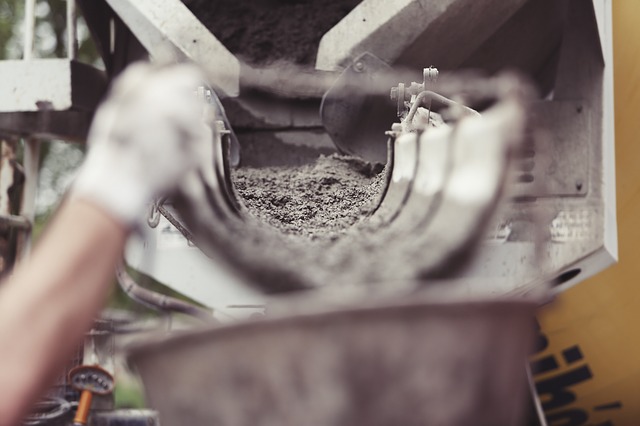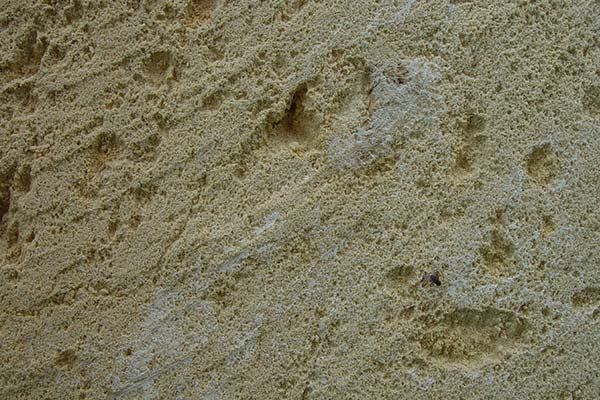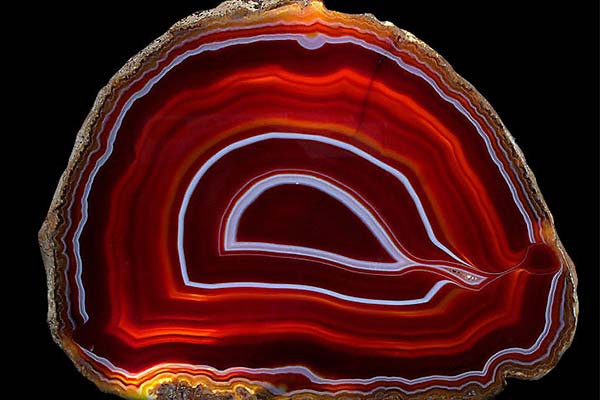Limestone: Types & Uses
- August 26, 2015
- By tekRESCUE
- Uncategorized
- 0 Comments
Limestone is one of those materials that is extremely versatile. It is formed though a variety of means (evaporative, marine), and many of its forms have practical use in modern day construction. Limestone, by definition is a rock that has at least fifty percent calcium carbonate within it. This allows for the rock to usually very cheap in bulk and is sturdy enough for building. Here are a few varieties of Limestone, including their qualities and what they’re used for.
Chalk
Chalk is a soft variety of limestone with a very fine texture, usually seen in white or light gray. It mainly forms from the shells of dead microscopic marine organisms such as foraminifers. It can also be formed from the calcified remains of marine algae.
Coquina
Coquina is another form of Limestone, which looks like a poorly put together rock that is composed of broken shell debris. While, coquina itself is not used in modern architecture, it is often quoted as natural land decoration.
Tavertine
Tavertine is a form of limestone that is deposited by mineral hot springs. It often has a fibrous look to it and is colored in white, tan, rusty or even cream-colored. Tavertine is one of the most commonly used materials in modern architecture, this day.
Because there are so many different types of Limestone, there are also different types of materials that can be made out of them. Again, we will list a few things Limestone can make, although there are many more things that can be made.
Dimension Stone
Dimension stone is Limestone that is often cut into slabs and blocks of specific sizes for use in construction and architecture. You can find it being used for floors, window sills, as stairs, or an exterior of a building, making it a “jack of all trades” if you will.
Roofing
Limestone can also be used in roofing granule mixtures by crushing limestone into a fine particle. It is often paired with asphalt for roofing because of it’s weather and heat resistant qualities.
Portland Cement
Portland cement is the most commonly made mixture from Limestone. It is a type of fill that is made by heating Limestone in a kiln along with other materials such as shale. Once it is heated and mixed, it will cool as a fine powder which is used as the standard cement fill you see today.
Limestone is such a great natural resource, isn’t it? If you ever need Limestone for any of your potential construction plans, NickelRock in San Marcos, TX can help you with whatever you may need. We also offer transportation services for our goods so that you won’t have to worry about hauling the material yourself. Give us a call today at 210–468–0290 and see what we can do for you.
Do You Know Your Soil?
- August 7, 2015
- By tekRESCUE
- Uncategorized
- 0 Comments
Whether it’s getting ready to grow a garden, fill an athletic field, or top dress a golf course, choosing the right type of soil can be either extremely beneficial or destructive to your purpose. Before you choose your soil, it is important to understand the different types of soil, and what they’re best used for. Classification is based on the texture, size, and mineral and nutritional content of the soil. Depending on the makeup of the soil, it can be used for gardening, as a ground base for building, or a good dressing for a lot or field.
Topsoil
Topsoil is commercially produced material that can be a supplement to soil that is nutritionally drained. Many topsoil blends have up to 10 percent organic material, which makes them very nutritionally dense. Topsoil can be mixed with the existing soil to help provide vital nutrients to plants and help control moisture rates. It can also be used as a standalone if you have no soil.
Beware though, a common problem with topsoil is when it is not blended together if there is existing soil where it is being placed. This is because it creates a water absorptions barrier that prevents the water from reaching the poor soil at the bottom.
Caliche
Often called “nature’s cement”, Caliche is a mineral deposit of gravel, nitrates, and sand found in dry areas around the world, especially in South America. It exists in both stone and soil form, both of which have a variety of uses in commercial construction. The most common use for Caliche is as a raw material used in Portland cement. Caliche is so widely used because it is low cost.
Washed Sand
Washed sand is a surface derived sand that is screened and washed to remove silt and clay. It is usually a light buff color. Washed sand is a finely graded sand which can be used for fill, to top dress golf course green, or as a base for laying bricks.
Fill Dirt
Fill Dirt is an earthly material which is used to fill in an existing hole or depression in land to elevate the land to even it out. Fill dirt is often a subsoil, which is soil extracted from beneath topsoil. Fill dirt is thoroughly screened and cleaned of any organic material, which can decompose and create pockets in the fill, in turn damaging any structures built on the fill dirt.
There are so many different types of soil for your next project, whether it be personal or commercial. Whichever you decide you may need, Nickel Rock LLC is here to help you get the material you need, and help you take it wherever you need it. Give us a call today at 210–468–0290 so that we can discuss your venture, and help you make it a reality.
Concrete Admixtures
- July 25, 2015
- By tekRESCUE
- Construction materials
- 0 Comments

Not all concrete is created equal. Throughout the years, construction engineers have distilled cement mixing down to a science, adding different materials to the mix in order to produce the best concrete for the job at hand. Vastly different slabs of concrete can be made just by altering the cement formula even the slightest bit.
While the water to cement ratio is often the most important variable determining a cement mix’s strength, there are dozens of other materials that can be added to a mix to change its characteristics in often surprising ways. Read on to see how construction materials like the ones we sell and ship are used to create the perfect cement for the job!
- Water Reducers—When added to concrete, these chemicals reduce the amount of water a cement mix needs to produce the desired slump, or malleability. As less water content results in stronger concrete, these admixtures can produce a sufficiently malleable cement that hardens into concrete that’s much harder than untreated cement would.
- Retardants—These slow the rate at which cement hardens into concrete, allowing it to remain workable longer. They’re especially useful in hot weather, as higher temperatures can cause cement to harden into concrete at a much higher rate than in cool weather.
- Accelerators—On the other end of the spectrum, these admixtures reduce the time it takes for cement to harden and gain strength. These are used if a job requires that cement sets quickly and are especially useful in cold weather, where cement’s rate of hardening is slower.
- Superplasticizers—When added to a mix, these chemicals dramatically increase the cement’s slump, resulting in extremely fluid and workable concrete. The effects only last an hour at most, so they need to be added on the job site immediately before the cement is placed.
- Specialties—Other admixtures fulfill very specific roles and can be very useful in specialized situations. They include corrosion inhibitors, which protect reinforcing steel from environmental damage such as chloride; shrinkage reducers, which help eliminate cracks resulting from drying shrinkage; alkali-silica inhibitors; and aggregates, which can serve as filler and reduce the cost of a construction job.
We hope you found this interesting and learned a thing or two about some of the uses for the construction materials we sell and ship here at NickelRock. No two construction jobs are the same, so using the right materials in a cement mix is key to producing the optimal concrete for the job.
Contact us if you have any further questions about construction materials or need materials for your next project. We’ll ship materials to any site in the Central Texas area!
Sustainable and Green Construction Material Options
- July 8, 2015
- By tekRESCUE
- Construction materials
- 0 Comments
Sustainable Construction are two words most people may have not heard put side by side before, or even thought could go hand in hand. Sounds crazy, right? Luckily, people have been discovering ways to make construction more green for a long time now. Engineers, researchers and architects are constantly testing and inventing ways to bring more sustainable and organic materials in construction practices. Here are some sustainable materials that people have been using and are currently testing out right now!
Wool bricks
Wool bricks are typical bricks, but with an added twist. Spanish and Scottish scientists devised a combination of wool and the clay material books are made out of to make a much stronger brick. According to the research, the wool brick is 37% stronger than it’s regular brick counterparts, and is much more resistant to wet climates. The bricks are also non-toxic and sourced from locally abundant materials, which allow for a quicker and more efficient.
Sustainable Concrete
Concrete in and of itself is already a sustainable material, but what if you added something more to it to amplify it’s “green-ness” even more? This is what sustainable concrete is. It is simply concrete that has recycled materials added to it. Materials can range from crushed glass, wood chips, or even slag, which is a byproduct of steel production. It may not seem like a radically transformative idea, using materials that would have been trashed anyways is a good way to keep it from ending up in the dump. Adding recycled materials also helps reduce the CO2 emissions from concrete.
Recycled Rubber
Recycled Rubber is a great way to help out the environment, especially because it’s sustainable and is great for your upcoming construction projects! Recycled rubber is used in many aggregates, such as such as rubber asphalt, which is especially useful in building roadways. The benefits are numerous, from improving the overall pavement life, increasing resistance to cracks forming within the asphalt, and reducing noise levels on roads and highways.
Terrazzo
There’s a good chance you’ve seen Terrazzo flooring in many buildings, and that’s for good reason. Terrazzo is a sustainable flooring made from recycled glass and cast concrete. The end result is a material made of 80-95% post consumer recycled content. Terrazzo is less porous than marble, with all the same texture and pattern work, so it looks just as beautiful and lasts just as long!
If any of these materials look good to you, perhaps you’ll be able to use them in your next construction project or endeavor! If you need a reliable, speedy and friendly company to help you transport your materials all across Texas, give Nickel Rock a call at 210–468–0290! We promise to help you get the construction materials you need, when you need it!
A Guide to Rocks in Texas
- June 22, 2015
- By tekRESCUE
- Minerals, Rocks
- 0 Comments
Imagine a hot, blistering day and a landscape filled with trees that look ancient and on the verge of collapse, animals that look as remarkable as the last gleam of twilight, and beautiful rock formations. This my friend, is Texas. Many believe that Texas is nothing more than boring old flatland, but that couldn’t be further from the truth. The Texas landscape hides and flaunts many different types of rocks and minerals. Here is a quick, small guide to the types of rocks and minerals you can find here in the Lone Star State.

Limestone
Limestone is a sedimentary rock composed largely of the minerals calcite and aragonite. Limestone usually contains large amounts of skeletal fragments from marine life. Limestone is one of the most commonly used stones in Texas, for a variety of purposes because of it’s strength, composition and abundance. In fact, most of the cave systems in Texas are Limestone carved out by water and erosion.
Sandstone
Sandstone is a sedimentary rock, composed of… you guessed it, mostly sand minerals and rock grains, quartz and feldspar. Because of this composition, Sandstone can appear in a variety of colors. Sandstone formations often allow porous liquids like water to flow through it and filter it like Limestone, Sandstone can be used as important aquifer and petroleum reservoir.
Shale
Shale is a fine grain rock, composed mostly of mud, clay minerals and quartz. Shale is easily fragmented and can be seen over all of Texas. Certain varieties of Shale can be broken down, and mixed with water, which can then be used to craft various sorts of items such as pots, figurines and the like.
Dolomite
Dolomite is a carbonate mineral that is often found in Central Texas. It is distinguished by it’s crystalline and saltlike features. It is often used as the flux when smelting metals and used as a concrete aggregate, but is also the base for many house hold items such as antacid, baby powders and toothpaste!

Agate
Agate is a variety of Silicate, defined by it’s bright colors and bands when breaking open the mineral. This mineral can be found in abundance at Big Bend National Park and there are a very varieties that are very prized among collectors. Agate itself is more of a decorative item, rather than a functional rock like Limestone or Sandstone.
Most of these rocks and minerals can be used for various constructions purposes, especially limestone, which is one of the most commonly used rocks in Texas. If you’re looking for a company to help you transport large quantities of your material anywhere in Texas, don’t hesitate to give Nickel Rock LLC a call at (210) 468-0290. We promise to give you the best customer experience possible while offering you quick service at a reasonable price!
Types of Trucker Contracts
- June 9, 2015
- By tekRESCUE
- Business, Transportation
- 0 Comments

There are two main types of contracts drawn up in owner-operator agreements: outcome-oriented contracts and behavior-oriented contracts. Each contract is different and will usually be adjusted based on the job, so they should be assessed before signing.
Outcome-oriented contracts are also known as performance based contracts, in which payment is based on how successful the delivery of the materials was. The outcome-oriented contract emphasizes the end result of the delivery, rather the process of getting to the destination. This type of contract also usually provide incentives for successful performance and penalties to non-performance.
Behavior-oriented contracts are contracts that similar to a commission based wage. The shipper will compensate it’s deliverers based on the number of hauls or shipments made. Usually, the payments in this sort of contract are considered “closed book”, which will not disclose the profit margins made by the trucker or truck owner.
These are just a few different types of trucker contracts. If you’re looking to work with a passionate material sourcing or construction material delivery service, please give Nickel Rock a call at 210–468–0290 for a quote. We don’t have a standard quote, because we make agreements based on the job.
Commercial Trucks and what they do
- May 24, 2015
- By tekRESCUE
- Uncategorized
- 0 Comments
Belly Dump Trucks
Also known as just the dump truck, these trucks are equipped for transporting loose materials such as gravel, sand or dirt. The back of the truck is in open bed style, with hydraulic arm underneath that pushes the bed upwards. This allows for the easy “dumping” of the materials to a specific place. These trucks work really well for loose material since they don’t need to be “gently” taken care of.End Dumps
End Dump trucks are larger, more powerful belly dump trucks, capable of holding all sorts of materials. The beds are usually larger, built with higher sides and can project higher up with hydraulics. But this also means that because of the larger bed, this type of truck needs to have a more stable bottom, otherwise the truck itself could tip over. These trucks are often used for aggregate stockpiling and snow removal.Haul Trucks
Haul Trucks are essentially souped up versions of dump trucks, meant for high-end mining sites, or heavy duty construction sites. Because of their large size, they are not to be used on highways. The payload capacity can reach up to 365 tons!Vacuum Trucks
Vacuum Trucks are heavy duty trucks that specialize in carrying solids, liquids, and viscous material. Other names for this truck are “Sewer Sucker” or “Honey Sucker”. They typically have a cylindrical, closed off bed with a way to suck in material, seal it off, and then release the material within the bed. The material on the inside of the bed is then released through a pump or “vacuum”, which is great if you need to deposit the material into a tank.Tri-axels
Tri-axel trucks are the ones we most commonly associate with “commercial truck”. These are often seen when on the highway, because they are the most commonly used truck. They can be used for transporting a wide variety of materials, from steel beams to loose material.Rail
Road-rail trucks are trucks that can operate both on the road and on railways. These trucks are especially useful for delivering materials to an area that require both a road and railroad. These trucks are not for every day use, and should only be used if necessary.Choosing the right truck for your project can be intimidating if you don’t know about the capabilities of each. If you have any questions about what sort of transportation would be best for your project give Nickel Rock a call at 210–468–0290 or ask us your questions at https://nickelrockllc.com/contact/. We’ll make sure you get what you need for the job!
Materials in construction and their uses
- May 12, 2015
- By tekRESCUE
- Construction materials
- 0 Comments
Concrete
Concrete is the most widely used materials for construction projects around the world. The benefits of concrete are immense. Concrete is compact, tough, and non-porous, making it perfect for use in roadways, tunnels, dams and bridges. Concrete is also fire-resistant, which can help curb the potential for fire spread in residential areas. All of these qualities make it easy to see why concrete is used so often in construction.Steel
While concrete is one of the most common stone-based materials used in construction, steel is one of the most common metal materials used in today’s modern infrastructures. It accounts for more than 50% of global steel production. The reason that steel is so widely used is because of it’s strength, beauty and versatility. Steel is also very easy to manufacture and is easy to maintain. Steel is used as infrastructure for buildings as well as an exterior, such as roofing and poles.
Asphalt
Asphalt is a combination of aggregates, fillers and other materials that can be made hard or more porous depending on the process used to make it. It if most often used to create flat surfaces such as roadways, parking and sports areas. Asphalt is to maintain, making it ideal for roads and public spaces.Limestone
Limestone is a hard sedimentary rock that can be transformed for many different uses, from being fired into cement, turned into an aggregate, or even crushed for construction purposes. Limestone is also finely crushed into granules for use as a filler in roof shingles because of it’s weather resistant properties. Limestone can also be used in the smelting process, where it will attach itself to impurities in the metal, which can then be removed as slag later.Fill Soil
Fill soil does just what the name states. It is used for filling in depressions on properties, or even creating artificial ridges and shapes on a landscape. Since fill soil only contains rocks, stones and sand, it is usually used when construction will eventually occur over the area.Top Soil
Top soil is the outermost layer of earth, mixed with sand, and organic materials. It is mainly used for large scale landscaping needs because it is so easy to till and the material in the top soil is needed for healthy vegetation growth.All of these materials are great when used in the right context and can be used in small or large projects. Do you need construction materials transported or supplied? Call Nickel Rock at 210–468–0290 or visit https://nickelrockllc.com/ so we can develop a customized plan for your needs.

